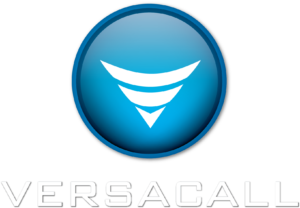Difference between revisions of "IT - Virtual Server Requirements"
From VersaVision Support
(Created page with "<div style="text-align: center;"><span style="color:#0054a6; font-size:150%;"><u>'''OVERVIEW'''</u></span></div> <BR> The information provided below is intended for the IT Department when they are providing a Virtual Server to accept the VersaVision software from VersaCall. <BR> ---- <div style="text-align: center;"><span style="color:#0054a6; font-size:150%;"><u>'''GENERAL'''</u></span></div> <BR> The VersaVision software is a system that enhances the notification of is...") |
|||
| Line 17: | Line 17: | ||
<div style="text-align: center;"><span style="color:#0054a6; font-size:150%;"><u>'''REQUIREMENTS'''</u></span></div> | <div style="text-align: center;"><span style="color:#0054a6; font-size:150%;"><u>'''REQUIREMENTS'''</u></span></div> | ||
<BR> | <BR> | ||
Requirements below are for the initial system setup. Depending on the complexity and size of the system, additional resources maybe required. | |||
<BR> | <BR> | ||
'''RAM''' - 16 GB | ::'''Operating System''' - Linux - | ||
::::'''Tested and Supported Versions:''' | |||
'''Storage''' - 128 GB (256 Recommended) | ::::::Ubuntu Server (20.04 LTS, 22.04 LTS) | ||
::::::Red Hat Enterprise Linux (9.2) | |||
'''Additional Information''' - requires a Static IP or DHCP reservation. | ::'''vCPU's''' - 4 | ||
::'''RAM''' - 16 GB | |||
::'''Storage''' - 128 GB (256 Recommended) | |||
::'''Additional Information''' - requires a Static IP or DHCP reservation. | |||
---- | ---- | ||
<div style="text-align: center;"><span style="color:#0054a6; font-size:150%;"><u>'''SERVER ARCHITECTURE'''</u></span></div> | <div style="text-align: center;"><span style="color:#0054a6; font-size:150%;"><u>'''SERVER ARCHITECTURE'''</u></span></div> | ||
<BR> | <BR> | ||
VersaVision uses a variety of services, databases and other components to run. All of these components operate in a containerized environment using the Docker Engine. Operating system is a Linux base | VersaVision uses a variety of services, databases and other components to run. All of these components operate in a containerized environment using the Docker Engine. Operating system is a Linux base. The databases, behind the system, are internal to the system and exposed via APIs. Front end web pages communicate to the system through the relevant APIs. | ||
<BR> | <BR> | ||
---- | ---- | ||
Revision as of 15:16, 22 May 2023
The information provided below is intended for the IT Department when they are providing a Virtual Server to accept the VersaVision software from VersaCall.
The VersaVision software is a system that enhances the notification of issues through Communications, Escalations and Real-Time Information (Dashboards & Audio/Visual).
All user interfaces to the software are primarily web-based. This means a user can access information from a web browser.
Requirements below are for the initial system setup. Depending on the complexity and size of the system, additional resources maybe required.
- Operating System - Linux -
- Tested and Supported Versions:
- Ubuntu Server (20.04 LTS, 22.04 LTS)
- Red Hat Enterprise Linux (9.2)
- Tested and Supported Versions:
- vCPU's - 4
- RAM - 16 GB
- Storage - 128 GB (256 Recommended)
- Additional Information - requires a Static IP or DHCP reservation.
- Operating System - Linux -
VersaVision uses a variety of services, databases and other components to run. All of these components operate in a containerized environment using the Docker Engine. Operating system is a Linux base. The databases, behind the system, are internal to the system and exposed via APIs. Front end web pages communicate to the system through the relevant APIs.
VersaCall does not have a specific backup requirement, we always recommended that backups be completed frequently to preserve data. When using a virtual server, we recommend using standard backups of images that are typically built in to the virtual server.

